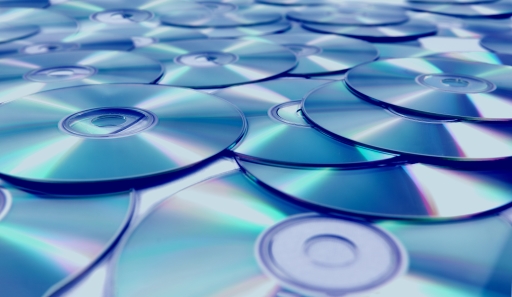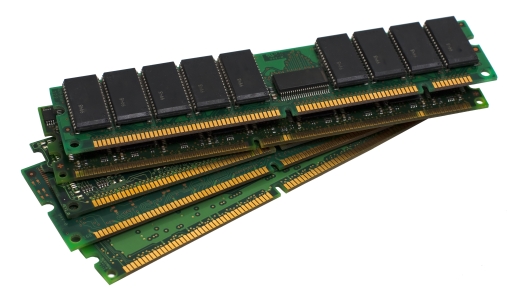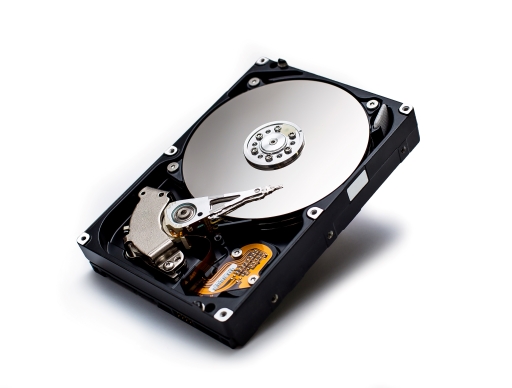3 Memory
You should now be beginning to build up a picture of what a computer is: you know it needs input and output devices to communicate with the world outside and a processor to carry out the instructions that are programmed into it. But where are these instructions stored within the computer? The answer is that they are stored within what is called the computer’s main memory, along with any data needed to carry them out.
This main memory is the ‘main’ place for storing instructions and data while a program is being executed. It is also called random access memory (RAM) from the way in which the processor accesses its contents. Its size is measured in bytes, or larger multiples of bytes such as gigabytes, a billion bytes, used in the laptop advert you saw earlier in this session. You will learn more about representing data in bits and bytes later in this course (in Session 4).
However, the main memory in computers like PCs is much too small to hold all of the programs and associated data that their users need. In addition, main memory does not hold onto its contents when the computer is switched off. So, users must be able to call up the programs they want, and also store and read back the files they have generated with these programs, from some form of capacious and retentive memory. This memory is called secondary memory, and there are two types, removable and permanent.
With removable secondary memory the user can store files and then ‘remove’ them from the PC, either to ensure there are copies if the computer fails, or to transport the files to another PC. New software can be downloaded from the web or installed from removable secondary memory. Removable secondary memory includes memory cards and DVDs, and older media such as floppy disks and CD-ROMs that are little used now. In contrast, permanent secondary memory is ‘permanently’ attached to the PC and is usually only removed if the PC is undergoing some maintenance or repair.
A typical example of permanent secondary memory is a computer’s hard disk – so called because it consists of one or more rigid magnetic disks rotating about a central axle. It is common practice to copy the files stored on permanent secondary memory onto some removable secondary memory as a backup in case of disk failure.
Note that the term ‘hard disk’ has been used here, but in the advert in Figure 1 the term ‘hard drive’ is used to refer to the permanent secondary memory. These terms are often used synonymously, though in fact there is a subtle difference which will be explained later.
Increasingly, PCs are using a solid-state drive for secondary memory. These drives use integrated circuits much like main memory and have the advantages of containing no moving parts and being much faster to access. However, they are a more expensive form of secondary memory, so some computers now have both solid-state drives and hard disks. The smaller solid-state drive is often used to contain programs so that the computer may access them quickly, while data is stored on the slower to access hard disk.



